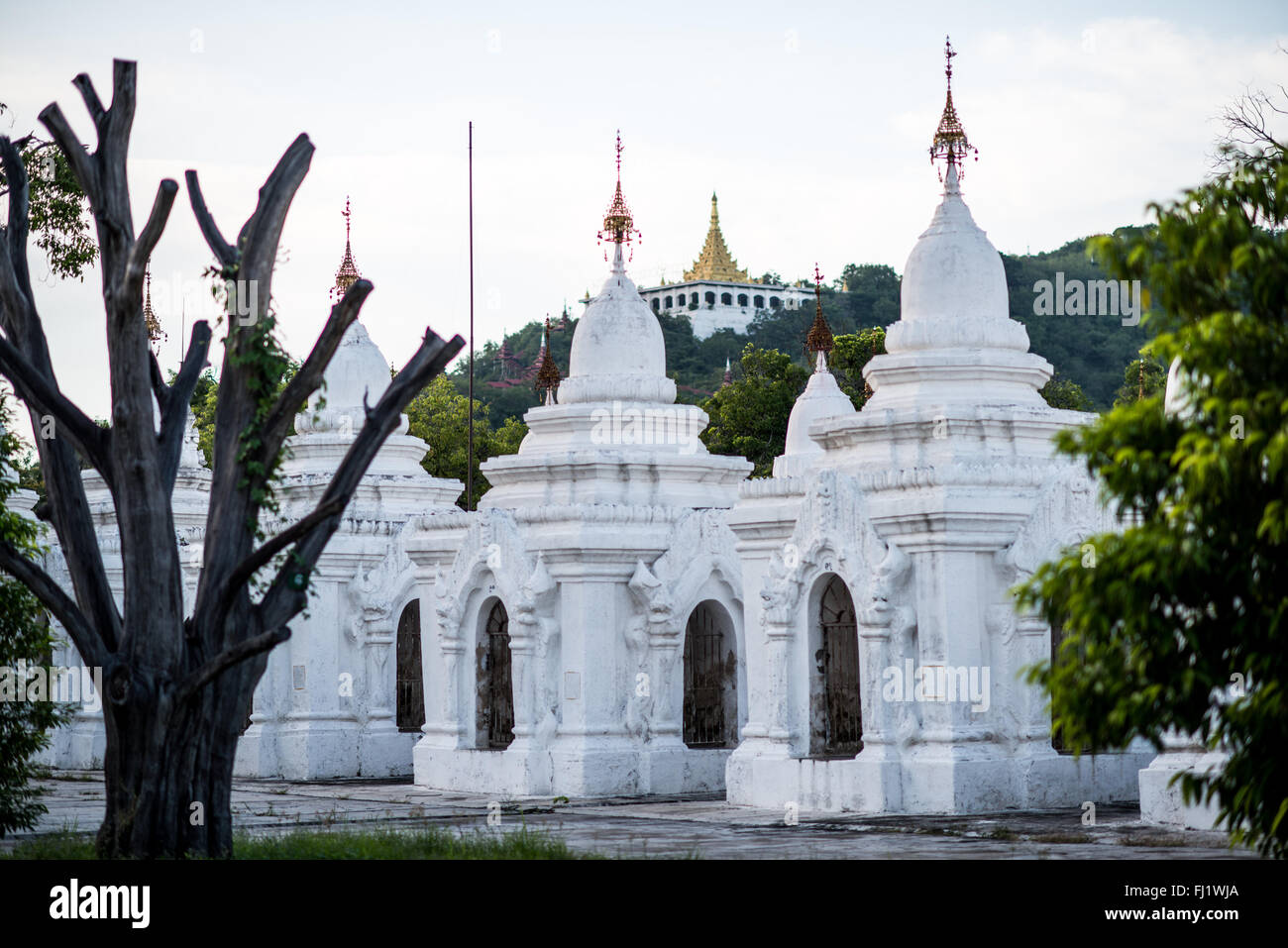MANDALAY, Myanmar — Rows of pristine white kyauksa gu (stone-inscription caves) stretch across the grounds of Kuthodaw Pagoda. Built in 1857 by King Mindon, the complex contains 729 marble slabs that collectively form what is known as the World's Largest Book. Each small stupa houses a marble tablet inscribed on both sides with text from the Tipitaka, the complete Pali Canon of Theravada Buddhism. The orderly arrangement of these structures reflects traditional Buddhist architectural principles.

Image details
Contributor:
David Coleman | Have Camera Will Travel / Alamy Stock PhotoImage ID:
FJ1WJAFile size:
85.9 MB (2.6 MB Compressed download)Releases:
Model - no | Property - noDo I need a release?Dimensions:
6706 x 4476 px | 56.8 x 37.9 cm | 22.4 x 14.9 inches | 300dpiDate taken:
3 October 2015Location:
Kuthodaw Pagoda, Mandalay, Mandalay Region, Myanmar (Burma)More information:
Photograph by David Coleman. Kuthodaw Pagoda, located at the foot of Mandalay Hill in Myanmar, houses an extraordinary collection of Buddhist texts known as the World's Largest Book. Constructed in 1857 under King Mindon's reign, the complex features 729 kyauksa gu, or stone-inscription caves, arranged in neat rows. Each white stupa protects a marble slab measuring 5 feet tall by 3.5 feet wide and 5-6 inches thick. These slabs contain the entire Tipitaka, the Buddhist Pali Canon, with the text meticulously carved into the stone and originally filled with gold ink. The creation of these inscriptions took eight years (1860-1868) and required 2, 400 pages of printed text to be carved in stone. The complex follows traditional Buddhist architectural principles, with the kyauksa gu arranged in perfectly aligned rows around a central golden pagoda. Each stupa is crowned with a precious gem, and the structures are painted white, symbolizing purity in Buddhist tradition. The site represents one of Buddhism's most ambitious projects to preserve sacred texts and continues to serve as an important center of Buddhist learning.